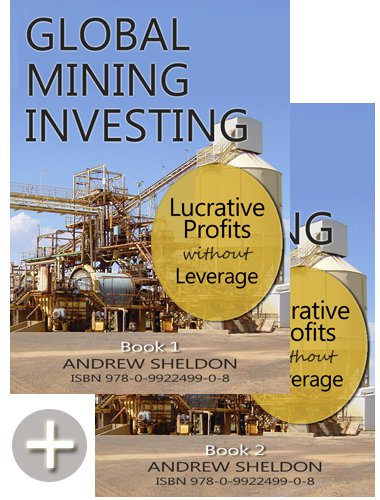Zircon occurs naturally in acid igneous rocks such as granites. The erosion of these primary source rocks lead to their eventual concentration in ancient & modern beach environments, in what are called beach strand deposits. The hardness and higher density of zircon results it the mineral being cast up the beach front during storms along with other `mineral sands` such as rutile, ilmenite ( the most common beach sand - a shiny black mineral).
Mineral sand deposits commonly stretch over vast lengths of coastline, eg. Along the east & west coastlines of Australia, the southern coast of Africa, the east coast of india, the Florida coast of the USA. Deposits vary in their grade of heavy mineral concentrate, their specific proportions of each mineral sand (zircon being worth more than ilmenite), the depth of the mineral sands, the grain size, the presence of contaminants like thorium, uranium and chrome, the presence of water, the lateral extent & vertical depth of the mineral sand resource, as well as availability of infrastructure, eg. power, roads, etc. The presence of extraneous minerals like magnetite, fine muds (slimes) and organic material can also be important for processing.
Perhaps the greatest contingency for mining mineral sands is environmental factors and land rights, whether claims conflict with indigenous people, or freehold titles. Beach fronts are valued lands, so mining can be contentious. this is despite the fact that mining is often well behind present beach fronts, can be very shallow, allows easy replacement of sand and actually cleans the sand of extraneous mineral matter, organics and the mineral sands which are not visually attractive. Sand stabilisation can be managed.
One of the most promising aspects of mineral sand mining is that it generally involves very simple processing using plant that costs not more than $1.5mil, compared to $10-20mil for a typical gold treatment plant. A beach sand mining plant comprises a set of spirals using gravity techniques to separate the `heavy minerals` from the sand and organics. Magnetite and ilmenite are removed by magnetic separators, and zircon is separated from rutile using finer gravity methods, ie. Wilfrey `shaking` tables. Its a very cheap process. Since these parameters extend to most deposits, its the natural characteristics of the deposit that determine its commercial appeal. The critical factors are mentioned above. Strategic factors are also important, such as proximity to existing processing & refining plant, sovereign risk of the country and grade of the deposit. The best mineral sand projects are inadvertently takeover over by the majors. eg. Iluka Minerals, Ticor Ltd, etc. Both these companies are listed on the ASX. More promise perhaps lies with:
- Matilda Minerals (MAL): MAL is developing a series of small, high grade mineral sand deposits on Meville Island, in the Northern Territory of Australia. The attraction of these deposits is their high grade and high zircon content, since zircon prices are $US480 compared to just $US85/tonne for ilmenite. Whilst the deposits are small, they are high grade and near the surface. There is also considerable potential to expand resources beyond the current 3year mine life given the broadness of such deposits, and the demonstrated 200km of surface indications. The company has had its mining, environmental plans approved, as well as gained the support of the aboriginal land council. There is some risk that fringe aborigines might oppose mining...though not likely.
- Alkane Exploration (ALK): they are developing a gold mine in central west NSW, Australia, but also hold title over an interesting badellyite deposit (chemical zircon deposit) in the Dubbo area nearby. The metallurgy of this deposit has proved more difficult, prompting its Japanese partner to pull out. A similar fate might occur with a new Chinese partner. Its a very large niobium-zirconium-yttrium deposit with a likely 100+ year minelife.
- Australian Zirconia Ltd (AZC): Previously called Southern Titanium, this company is developing a Zircon-ilmenite project at Horsham, Victoria. They have 16years of reserves, however they have been forced to re-engineer the project to make it commercially attractive. This is a large scale project, but the $A70mil capital cost was excessive. They are currently buying 2nd hand equipment.
Whilst ALK has speculative appeal, the MAL project offers alot of upside, though the company will be undermined by any softness in commodities markets. The easy of mining mineral sands is likely to impact greatly on producers, so short term trading/investment based on chart indicators is a must. Takeover remains a possibility, though the majors will be more impressed by the strategic zircon suite than the small size of the deposits.








![[Most Recent Quotes from www.kitco.com]](http://www.kitconet.com/charts/metals/gold/t24_au_en_usoz_2.gif)
![[Most Recent Quotes from www.kitco.com]](http://www.kitconet.com/charts/metals/silver/t24_ag_en_usoz_2.gif)
![[Most Recent Quotes from www.kitco.com]](http://www.kitconet.com/charts/metals/platinum/t24_pt_en_uskg_2.gif)
![[Most Recent Quotes from www.kitco.com]](http://www.kitconet.com/charts/metals/palladium/t24_pd_en_usoz_2.gif)
No comments:
Post a Comment